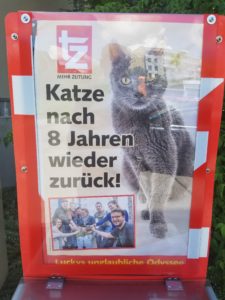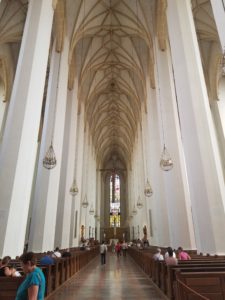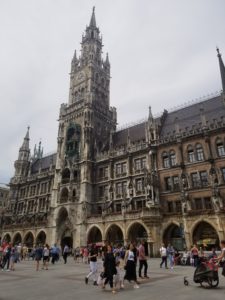
My search for a proper introduction to a customary Bavarian dish was long, winding, and filled with many failed attempts, but finally, on a cool Wednesday night in a Biergarten by the name of Hirschgarten (Deer Garden) in Munich’s Laim district, I attained what I had sought. I had already visited Hirschgarten twice before. In my first week, I went alone and simply ordered a BrezeI and Pommes Frites (no reason to order a 1 liter Maß Bier to drink alone!), and enjoyed the good weather with a book in the park.

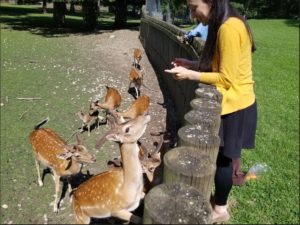
The second time I visited with meine Freundin, but the Biergarten was not yet open so we ate some fresh fruit we had brought along, and shared the rest with the resident deer that give the park its name and fame. Aller guten Dinge sind drei! After Vespers and Mass with the Benedictine sisters whose Abbey adjoins my apartment building, I made my third visit to Hirschgarten with Pater Stephan, a Benedictine priest and professor at LMU, Luísa, who is also studying German through the SLA program.
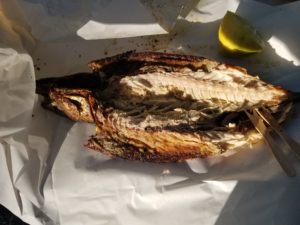
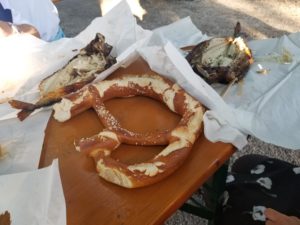
We strolled over to Hirschgarten to enjoy conversation and eat together etwas typisches (something special to the region) We decided on Steckerlfisch – Makrele seasoned with salt and light spices, served on a skewer (Steckerl in the dialect), and eaten with a small wooden pick. We also each enjoyed a pretzel and an Augustinerbier, although I still haven’t built up the courage to order an entire liter for myself.
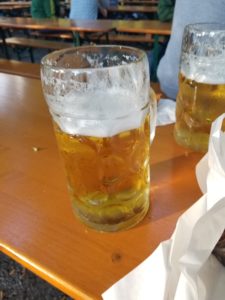
Pater Stephan talked about the significance of Biergärten in Germany, especially for Bavaria. Other topics of conversation were the ongoing Weltmeisterschaft (Germany had sadly already been eliminated), Pater Stephan’s travels in the U.S., and our mutual interests in theology. It was a beautiful night and a wonderful way to finally learn about a regional meal from a local dining partner, after trying unsuccessfully on other occasions to convince a waiter to describe at length the dishes on the menu. I hope to keep in touch with Pater Stephan as time goes on, and am very grateful for getting to know him through mealtime conversations such as this.

